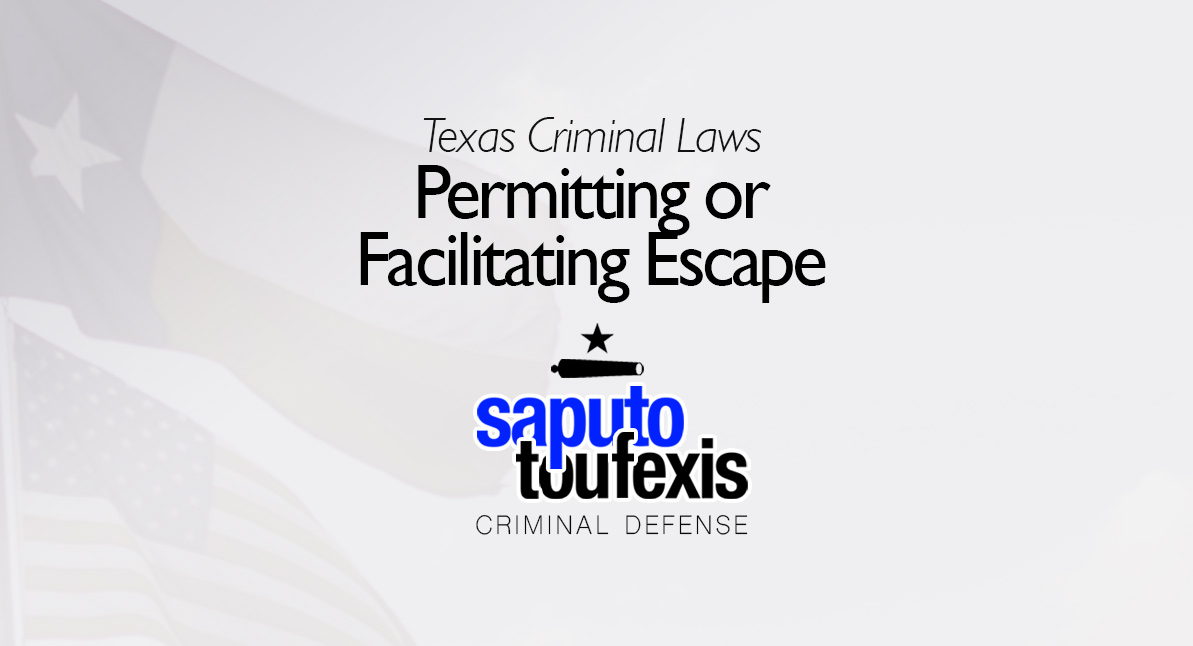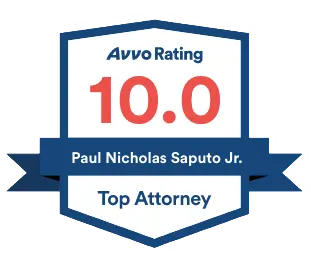The Texas Permitting or Facilitating Escape law makes it illegal for an employee of a correctional facility to allow an escape to happen or to facilitate an escape.
FAQs about the
Permitting or Facilitating Escape law in Texas
- What is the current Texas law about Permitting or Facilitating Escape?
- How can I be charged with a Permitting or Facilitating Escape offense in Texas?
- What is the statute of limitation for Permitting or Facilitating Escape in Texas?
- What is the penalty for a Texas Permitting or Facilitating Escape offense?
- Can you get probation for Permitting or Facilitating Escape in Texas?
- What level of crime is Permitting or Facilitating Escape in Texas?
The law also makes it illegal for anyone to help a juvenile escape from a juvenile detention center andr to help someone escape from involuntary mental health commitment.
The Texas legislature codified this criminal offense in Texas Penal Code Section 38.07. The legislature did not update this law in 2023. In fact, this law has not been amended since 2007.
Have you been charged with Permitting or Facilitating Escape? Contact us today to discuss legal representation.
or Text or Call (888) 239-9305
Other Texas criminal offenses related to escaping from custody include Escape and Implements for Escape.
The Penal Code classifies the Texas Permitting or Facilitating Escape law under Title 8 “Offenses Against Public Administration,” Chapter 38 “Obstructing Governmental Operation.” Learn more about the Texas offense of Permitting or Facilitating Escape below.
What is the current Texas law about Permitting or Facilitating Escape?
Texas law currently defines the offense of Permitting or Facilitating Escape in Penal Code Section §38.07 as follows:[1]
(a) An official or employee of a correctional facility commits an offense if he knowingly permits or facilitates the escape of a person in custody.
(b) A person commits an offense if he knowingly causes or facilitates the escape of one who is in custody pursuant to:
(1) an allegation or adjudication of delinquency; or
(2) involuntary commitment for mental illness under Subtitle C, Title 7, Health and Safety Code, or for chemical dependency under Chapter 462, Health and Safety Code.
How can I be charged with a Permitting or Facilitating Escape offense in Texas?
If you’re an officer or employee of a correctional facility, you can be charged with Permitting or Facilitating Escape in Texas if the state’s attorneys believe that each of the elements of 38.07(a) as described in the section above have been met.
Anyone can be charged under subsection (b) if the state’s attorneys believe that each of the elements of 38.07(b) as described in the section above have been met.
What is the statute of limitation for Permitting or Facilitating Escape in Texas?
Misdemeanor level Permitting or Facilitating Escape charges have a two-year limitations period.[2] Felony level offenses have a three-year limitations period.[3]
What is the penalty for a Texas Permitting or Facilitating Escape offense?
A conviction for Permitting or Facilitating Escape is punished by default as a Class A misdemeanor,[4] with a maximum possible fine under Texas state law of up to $4,000 and jail time of up to one year.
however, if the person who escaped was in custody or imprisoned for a felony, then a conviction for Permitting or Facilitating Escape in Texas is punished as a Felony of the Third Degree,[5] with a maximum possible fine under Texas state law of up to $10,000 and prison time of up to 10 years.
And if the person who is in custody or imprisoned threatens to use a deadly weapon to help escape, then a conviction for Permitting or Facilitating Escape in Texas is punished as a Felony of the Second Degree,[6] with a maximum possible fine under Texas state law of up to $10,000 and prison time of up to 20 years
Can you get probation for Permitting or Facilitating Escape in Texas?
The Texas Code of Criminal Procedure allows both judges and juries to grant probation for Permitting or Facilitating Escape, and judges are also allowed to accept deferred adjudication plea deals.[7]
Note, however, that no matter the offense, neither judges nor juries may recommend community supervision for any suspended sentence of over 10 years.[8] Also, judges may not grant community supervision after a conviction if (1) the defendant used or exhibited a deadly weapon during the commission of the felony or immediate flight thereafter and (2) the defendant used or exhibited the deadly weapon himself or was a party to the offense and knew that a deadly weapon would be used or exhibited.[9]
What level of crime is Permitting or Facilitating Escape in Texas?
The Penal Code classifies Permitting or Facilitating Escape as a Class A misdemeanor, second degree felony, or third degree felony, depending on the circumstances.
Learn more about the penalty range for this offense in the section above.
Legal References:
^1. Texas Penal Code §38.07. This law is current as of 2024.^2. Code of Criminal Procedure 12.02(a)^3. See Code of Criminal Procedure 12.01(9)^4. Texas Penal Code §38.07(c)^5. Texas Penal Code §38.07(d)^6. Texas Penal Code §38.07(e)^7. See Chapter 42, Texas Code of Criminal Procedure, Art. 42A.054, Art. 42A.056, Art. 42A.102^8. Art. 42A.053(c), Texas Code of Criminal Procedure^9. Art. 42A.054(b), Texas Code of Criminal Procedure








